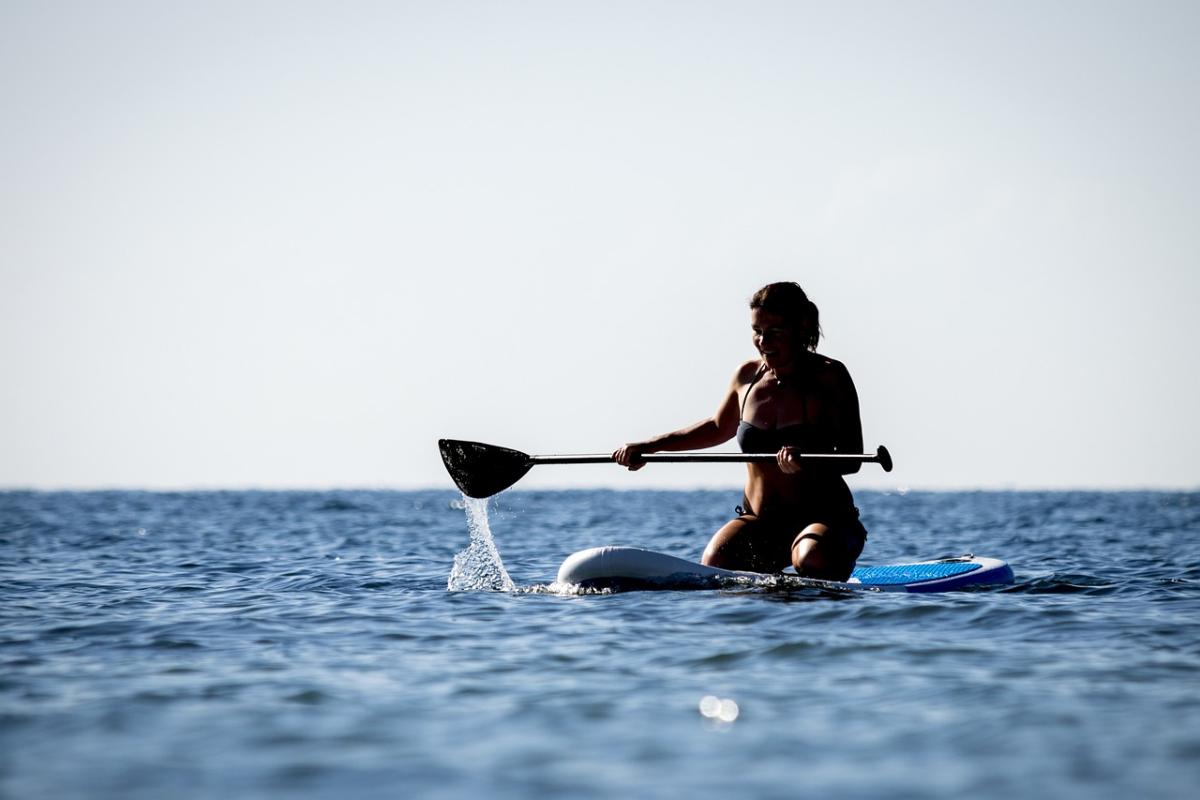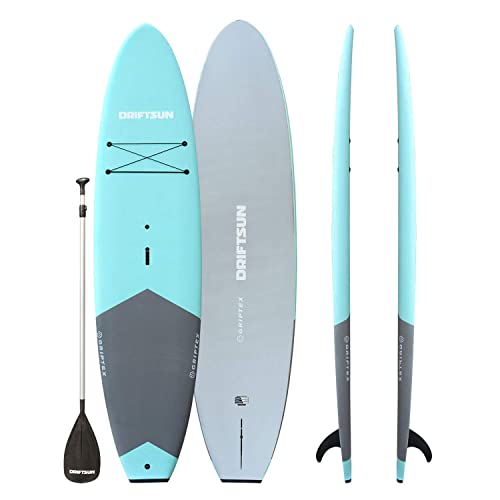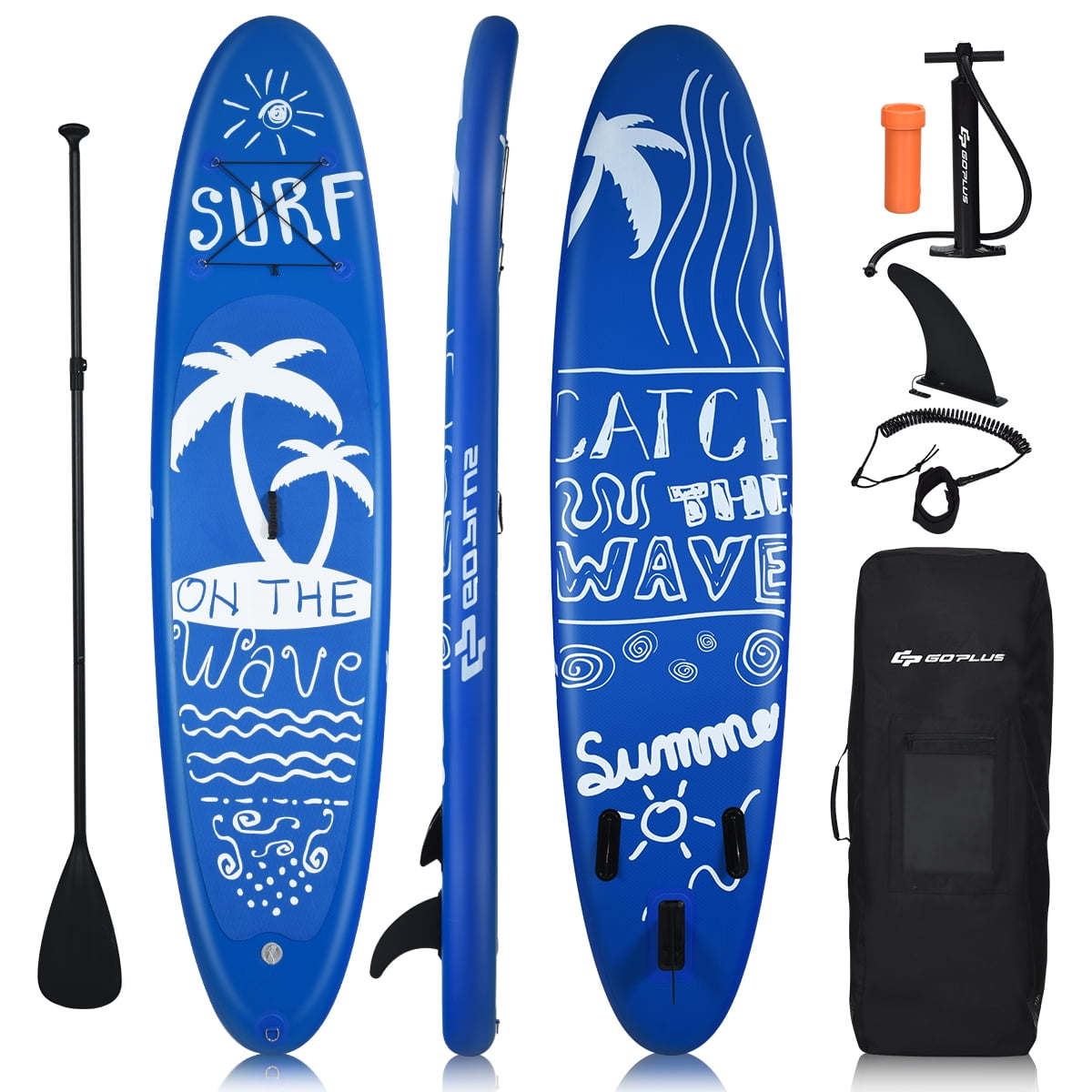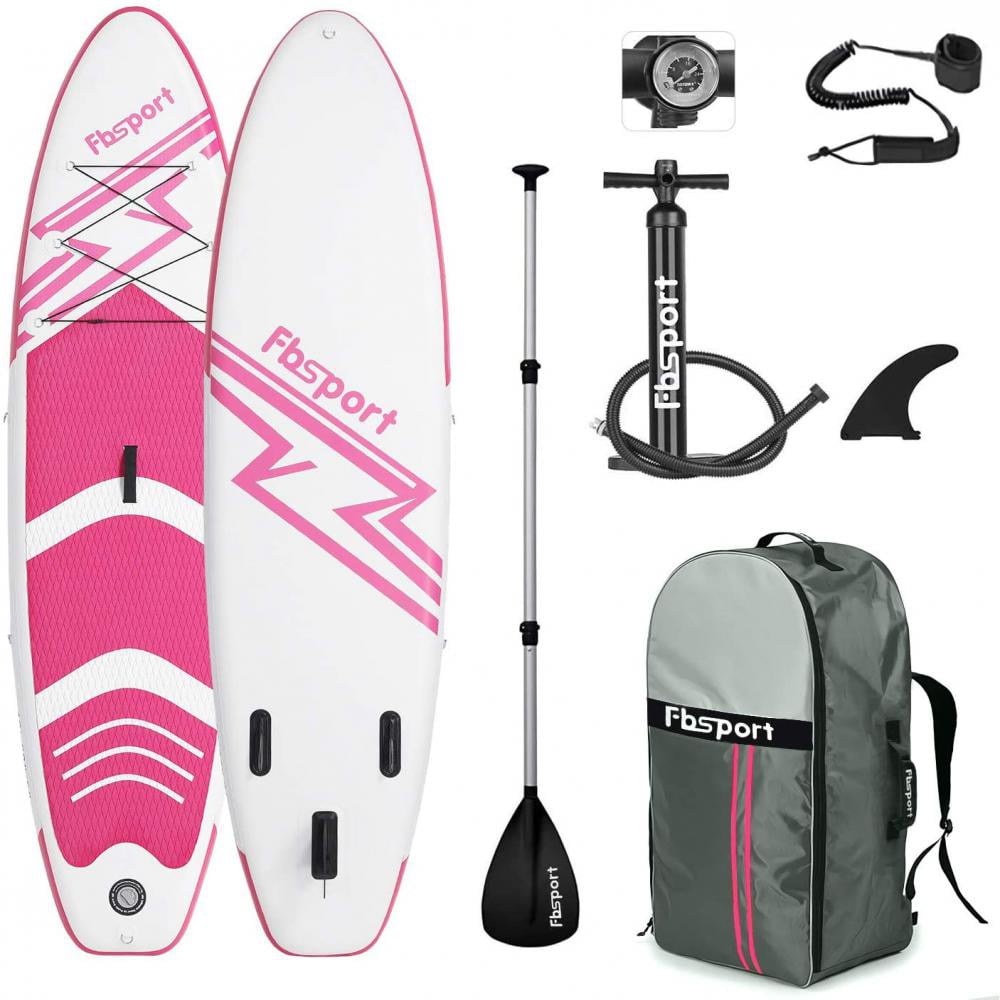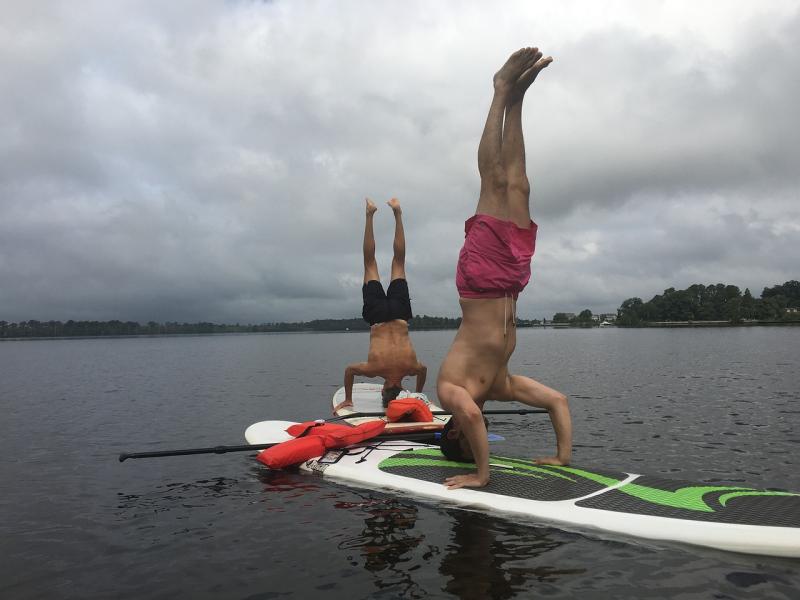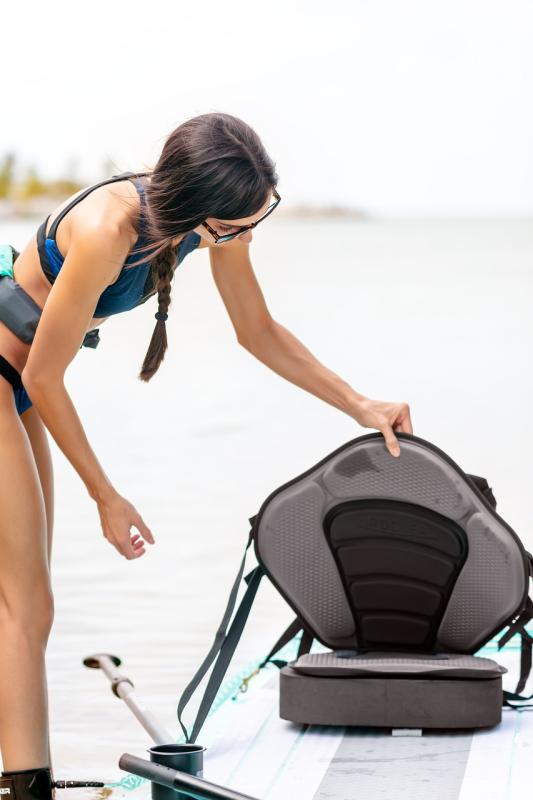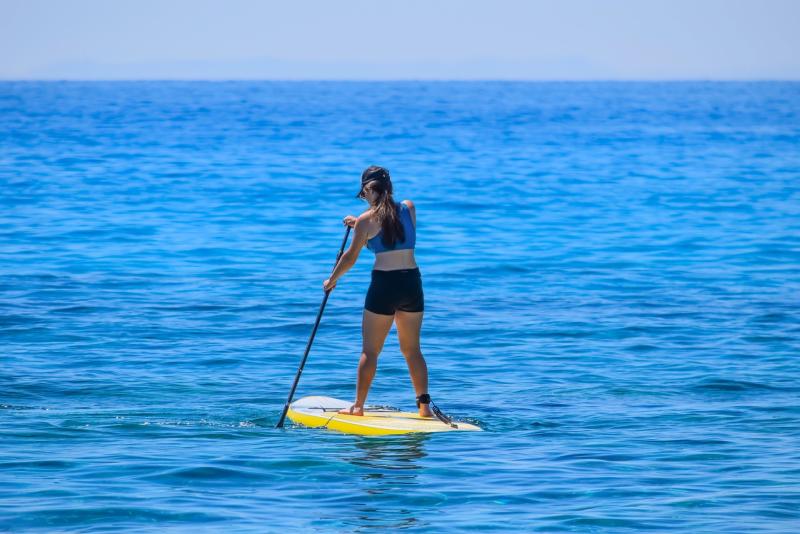When it comes to paddleboarding, having the right gear is essential for an enjoyable and safe experience. Whether you're a beginner or an experienced paddler, there are a few must-have essentials that should be in your arsenal. Here are the top gear items you should consider:
Driftsun 11ft Stand Up Paddleboard Bundle
The ultimate paddleboarding package for beginners and experts alike, the Driftsun 11ft Stand Up Paddleboard Bundle offers everything you need for an unforgettable water adventure
Product information
$499.99
Product Review Score
4.63 out of 5 stars
153 reviewsProduct links
1. Paddleboard
The most crucial piece of gear is, of course, the paddleboard itself. As a beginner, it's advisable to start with a wider and more stable board to help with balance. Look for a board that is specifically designed for beginners and is made of durable and lightweight materials.
2. Paddle
Choosing the right paddle is equally important. Look for a paddle that is adjustable in length so you can customize it to your height and the type of paddling you'll be doing. Opt for a lightweight paddle made of fiberglass or carbon fiber, as these materials are easier to handle and will reduce fatigue during longer excursions.
3. Personal Flotation Device (PFD)
Regardless of your swimming abilities, wearing a Personal Flotation Device (PFD) is a must when paddleboarding. In case of unexpected falls or accidents, a PFD will keep you afloat and provide a sense of security. Make sure to choose a PFD that fits you well, allowing for freedom of movement without being too loose.
4. Leash
A leash is another essential piece of gear that should never be neglected. A leash attaches you to your board and ensures it stays within reach, even if you fall off. This security measure prevents your board from drifting away and keeps you safe by minimizing the risk of getting separated from your board in challenging conditions.
Goplus 11' Inflatable Paddleboard - Adult Youth
Find the perfect paddleboard for adults and youth with the versatile Goplus 11' Inflatable Paddleboard
Product information
$240.00 $139.99
Product Review Score
4.58 out of 5 stars
220 reviewsProduct links
Getting on Board: Easy Techniques to Start Paddleboarding
Paddleboarding is an exciting water sport that offers a fantastic full-body workout while allowing you to immerse yourself in nature's beauty. If you're new to paddleboarding, mastering a few basic techniques will help you enjoy this activity to the fullest. Here are some essential tips to get you started:
1. Find the Right Board
Choosing the correct paddleboard is crucial for beginners. Opt for a wider and more stable board, as it will provide better balance and control. Inflatable paddleboards are an excellent choice for beginners due to their durability and ease of transportation.
2. Start in Calm Waters
When learning to paddleboard, it's best to begin in calm waters with no waves or strong currents. Look for a serene lake or a sheltered bay where you can practice your skills without worrying about rough conditions. This will help build your confidence and improve your technique.
3. Find Your Balance
Before venturing into deep waters, take some time to find your balance on the board. Stand in the middle with your feet shoulder-width apart and your knees slightly bent. Distribute your weight evenly and try to keep a stable and relaxed posture. Remember, practice makes perfect, so give yourself time to adjust.
4. Master Proper Paddling Technique
When paddling, hold the paddle with both hands, keeping them shoulder-width apart. To maximize strength and efficiency, rotate your torso as you pull the paddle through the water. Keep your gaze forward and aim for a smooth, continuous stroke, using your core muscles for stability.
FBSPORT Inflatable Stand Up Paddleboard - 10'x30"x6
Experience the ultimate adventure on the water with the FBSPORT Inflatable Stand Up Paddleboard - your gateway to endless fun and excitement!
Product information
$259.99 $179.00
Product Review Score
4.46 out of 5 stars
225 reviewsProduct links
Mastering Paddleboarding Strokes: A Beginner's Guide
One of the most essential skills to develop as a beginner paddleboarder is mastering the various paddleboarding strokes. These strokes are crucial for controlling your board, navigating through different water conditions, and maximizing your efficiency on the water. In this guide, we will cover three fundamental paddleboarding strokes that every beginner should learn and practice.
The first and most basic stroke is the forward stroke. This stroke involves reaching your paddle as far forward as possible, inserting it into the water, and pulling it back alongside the board in a straight line. This movement propels you and your board forward. To maintain balance and stability, make sure to evenly distribute your weight and engage your core muscles. The forward stroke is the foundation of all other paddleboarding strokes, so it is important to get comfortable and confident with this one before moving on to more advanced techniques.
The second stroke we will discuss is the sweep stroke. The sweep stroke is used to turn the board by providing more propulsion on one side than the other. To execute this stroke, start by placing your paddle in the water towards the front of the board and sweep it in a wide arc towards the tail of the board. This will cause the board to veer in the opposite direction of the stroke. Practice sweeping on both sides to become proficient in steering your paddleboard effectively in any direction.
Staying Safe on the Water: Essential Tips for Beginners
Paddleboarding is a fantastic water activity that offers a great workout and a peaceful way to enjoy nature. However, it is important to prioritize safety, especially if you are new to paddleboarding. Here are some essential tips to keep in mind before hitting the water:
1. Wear a personal flotation device (PFD) or a life jacket. Regardless of your swimming ability, it is crucial to have a PFD on at all times while paddleboarding. In case of a fall or unexpected loss of balance, a PFD will provide the necessary buoyancy and increase your chances of staying afloat until help arrives.
2. Check the weather conditions and the forecast before heading out. Always paddle in calm waters and avoid going out if there are strong winds, lightning, or fog. Weather conditions can change rapidly, so it is important to stay alert and be prepared accordingly.
3. Learn the proper paddling technique and practice maintaining your balance. Taking a beginner's lesson or watching tutorial videos can help you understand the correct paddle strokes and improve your balance on the board. Start in a calm area with minimal current and gradually progress as you gain confidence.
